|
We open on a man named Jonathan chopping wood. A voice from midair calls him, and turns out to belong to the Queen of the Forest, who asks Jonathan not to cut down the tree. He doesn’t believe her, but she talks him into agreeing, and says she’ll grant him three wishes. Then she vanishes, proving that she’s magical. He goes home for dinner and says grace before he eats. This is such a fifties movie. He keeps trying to tell his wife about the Queen of the Forest, but stops, complains about having cabbage for dinner, and wishes for sausage. Bing, there’s a sausage. He starts talking about how beautiful the Queen was; his annoyed wife wishes sausage was on his nose. Blah blah blah. This isn’t even Tale Type 700! Finally this blows over and they make up, and the wife gives us The Line: “Even if he were no bigger than my thumb.” Cut to outside. It’s dark. Owls watch as something rustles in the grass, heading slowly towards the tiny house. In the silence, someone’s whistling but we can’t see who. This is shot like a horror movie. Jonathan and Anna are asleep (in different beds. Such a fifties movie). 13 minutes in, we finally see Tom Thumb, dressed in a (normal-sized) fig leaf. I first saw this dubbed in Spanish, and with the low-quality video and annoying high-pitched voice, I thought he was a woman. It didn’t help that the leaf looks like a dress. Anyway, as Tom warms himself by a candle, he announces that he’s their son. He’s actually five and a half inches tall, so quite a bit bigger than a thumb. The overjoyed couple place the tiny adult man in a baby’s cradle and bid him goodnight. This was one thing that felt weird about the movie – Tom is a child, really, and everyone treats him as such, but he’s played by a grown man. Not that Russ Tamblyn was bad in the role. He has a very playful Peter Pan-like air, and he does some great acrobatics, but I still feel like having a child in the role might have been better for effect. Tom varies between being an obvious cutout and a doll. I should mention that this film won an Oscar for special effects. For its time, this was pretty good. Anyway, Tom is woken by his toys, who want to sing and dance for him. There’s a stereotypical Chinese doll named Con-Fu-Shon. I think there’s also a golliwog running around in the room, just so twenty-first-century viewers can feel sufficiently cringy. Also among Tom’s toys is an angry-looking bride doll (clearly a woman trying with her all not to blink), who’s the only one who doesn’t come alive. Then we get to the LONGEST DANCE SEQUENCE EVER. After five hours straight of Tom’s whimsical insanity, it’s morning. Tom and his father go out to the fields to work, and are spotted by two crooks who want to use Tom in their heist. Tom is naïve and trusting, but his father knows better and sends them on their way. On the way back, we encounter Woody, some random guy who’s in love with the Queen of the Forest. They can only be together if he kisses her and she becomes mortal, but they keep dancing around the subject and this is our excuse for a plot, people. Woody heads off and encounters Jonathan and Tom. He offers to take Tom to the upcoming local fair, and Jonathan agrees. WHY am I watching a random guy singing about STOP-MOTION-ANIMATED SHOES? I DON’T KNOW! Anyway, Woody and Tom run off to buy some shoes. The shoemaker gives Tom some miniature shoes off a keychain. However, in the midst of the dancing people, Tom nearly gets trampled, and grabs onto a balloon’s string and floats away. He floats right over the castle that the two crooks are trying to break into. (I call no way.) They shoot down his balloon with a slingshot and catch him. He thanks them for saving him, and they con him into helping them steal a bag of gold. They claim it’s for orphans. Then they send him off through the dark, scary swamp, with a single gold coin for his troubles. Fortunately, he’s rescued by the Queen of the Forest, who then has a argues with Woody. Finally Tom sneaks home, afraid of getting in trouble with his father. (Both of these scenes have the man yelling at Tom and the woman saying “Don’t yell at him.”) Along the way, Tom accidentally drops his coin into a batch of bread that his mother’s cooking up. Tom is sent off to bed, and the toys decide to bring out a doll called “The Yawning Man” to help him fall asleep. This, of course, involves singing. NOOOO Okay, okay. The soldiers are looking for whoever robbed the treasury, and stop by Jonathan and Anna’s house. Anna offers them some breakfast, but wouldn’t you know it, she gives them the bread containing the coin. The soldiers decide to arrest the couple. Tom and his toys hear the commotion and try to get out, but Tom can’t open the door. This was actually a pretty sad scene. Finally Tom gets out and finds Woody. Fortunately, Woody somehow knows where to find the thieves. They track them down to an abandoned castle, where we find the thieves counting “Two for you and two for me, three for you and three for me…” in a scene straight out of Maria como un Ajo. Meanwhile we’re continually cutting back to Jonathan and Anna, who are about to be sentenced. Their punishment is 24 lashes. And I guess that’s it. This seems a bit underwhelming to me, especially since they’re still playing the town lasher as a clumsy, goofy person who gets tangled in his own whip. He seems to have his hood on wrong. Tom plays tricks on the robbers for a few very long and repetitive minutes, and then Woody starts throwing punches and the fight commences. After that fight scene, presumably all of the participants have brain damage. So many head blows. I think everyone spent at least a few minutes unconscious except for Tom. The thieves finally figure out what’s going on and decide to escape on their horse, but Tom is hiding in its ear and directing it towards town. This looks way more uncomfortable for the horse than I’d envisioned it. Jonathan gets his shirt torn off so that he can be lashed, and he turns out to be pretty toned, at least in the back region. But just before they can whip him, the thieves come flying in on their horse and fall off, sending gold flying everywhere, and Tom shouts that they’re the culprits. They’re about to escape, but Woody catches up with them and punches them out. Hurray! The Queen of the Forest pops in, and Woody kisses her. They both vanish momentarily, and her gown and diamond crown transform to a peasant dress and flower wreath, which . . . I guess . . . means she’s mortal now . . . ? Anyway, they get married and everyone is standing around celebrating. Tom is the groom figurine on the cake, standing next to that bride doll from earlier. He kisses her on the cheek and she comes to life (or perhaps simply gives in to the crippling urge to blink). They dance around the cake and everyone sings. So . . . are kisses in this universe magical?
This movie left a lot unexplained, like how Tom actually came into being. It’s harmless, but doesn’t have much substance, and some of the elements (such as Con-Fu-Shon) haven’t aged well. Although Tamblyn’s acrobatics are excellent and the stop-motion effects are nice, it suffers from long musical sequences which completely halt the narrative for minutes on end. Storywise, it’s a fairly straightforward Thumbling retelling, but with far too much padding. The Woody/Forest Queen romance was unnecessary. Overall, it was an interesting watch - not great, but okay.
0 Comments
As I search, I continually encounter a few resources that remain unavailable to me through the Internet and the American library system. I’ve decided to post them here, and should I find them and be able to read them, I’ll tick them off.
“Master Thumb,” retold by Htin Aung – What is the character’s name in the original dialect?? May 15, 2016: Miiiight have possibly found it, maybe. https://mmstorytellers.wordpress.com/2014/08/09/ငလက္မ/ Tale of the “hedgehog-sized boy.” The folklore collection of Jakob Hurt III, 27, 339/44. Estonian Literary Museum. “Thumb Boy” – name in original Oroqen dialect.
“Draganka,” from Senovo. Recorded by Milena Benovska in 1990. The only lead I’ve found on this is the title of a thesis by Benovska - "Териоморфни митически персонажи в българския фолклор/ Theriomorphic mythical characters in Bulgarian folklore." A couple of equivalents:
"Story-type Analysis of Mongolian Folktale Sheep-Tale Boy" Nights of Baghdad – Iraqi Folktales “A Dwarf.” Zong In-sob, Ondol Yawa, Nihonshoin, pp. 380, 1927. May 15, 2016: Found equivalent. Irish Thumblings. I recently checked out The Types of the Irish Folktale, which listed a lot of references for the Thumbling tale type, but to my disappointment, they've been pretty hard to track down.
Chinese Thumblings.
Miscellaneous Books
Her original name was Tommelise. Tommel is the Danish word for thumb. When Hans Christian Andersen made up this name, he was clearly inspired by older folklore existing in Denmark and other countries. Just for context, Thumbelina appeared in 1835, twenty-three years after the Grimm brothers' first collection featuring Daumling, and eighteen years after the writer Rasmus Nyerup referenced a Danish folklore character named Svend Tommling.
Andersen is one of the most frequently translated fairy tale writers in the world, and for every translation of his work, there's another name for Tommelise. Here's a list: Albanian: Gishtëza (gisht = finger; Gishtëza translates literally as Thimble) Armenian: Matnačap'ikë or Matnachapik (մատ, mat = finger) Basque: Erpurutxo (erpuru = thumb) Belarusian: Цалёўка/Calioŭka (цалевы, calievy = inch) Bengali: খর্যকায়ার বিবব়ণ/Kharvakāyār vivaraṇa.
палечка/Palechka, Palečka (palets = thumb) Burmese: မလက်ငယ် (Ma Let-Than/Miss Little Finger) Catalan: Ditona (dit = finger)
Central Alaskan Yup'ik: Kumluckaq
拇指姑娘 (Muzhǐ Gūniang, Thumb Girl) Czech: Malenka (málo = small, maličký = tiny) Dutch: Duimelijntje (duim = thumb) English: Little Thumb.
Little Ellie
Pöial-Liisi (pöial = thumb) Finnish: Peukalo-Liisa (peukalo = thumb) French: La Petite Poucette (pouce = thumb) Poucelina Poucette "Mam'zelle Tom Pouce" was used as the French title for the 1978 anime adaptation. Galician: Polariza Georgian: ნამცეცა (namts’ets’a, tiny) German: Däumelinchen (from Daumen, thumb), Däumeline Greek: Τοσοδούλα (Tosodoúla – probably derived from the Greek word for “tiny”) Hebrew: אצבעונית (Etsbeonit. This translates literally to Foxglove, which in Hebrew is derived from the word for finger. Foxglove flowers are the right size to be worn on fingers. Hungarian: Hüvelyk Panna (huvelyk = Inch, Panna = nickname for Anna); Pöttöm Panna (pöttöm = tiny) Italian: Mignolina (from mignolo, Little Finger) Pollicina (from pollice, thumb) Icelandic: Þumalína (þumalfingur = thumb) Japanese: 親指姫 - (Oyayubi-hime, Princess Thumb) Korean: 엄지 공주 - (Eomji gongju, Thumb Princess) Latvian: Īkstīte (īkšķis = thumb) Lithuanian: Coliukė (Colis = Inch) Romanian: Degețica (Deget = finger) Polish – (list and translations by Bogusława Sochańska) Calineczka (Rygiel 1909, Cal = Inch) Calinka (Little Inch Girl, Lewestam 1859) Calóweczka (Little One-Inch Girlie, 1892) Paluszka (Little Finger Girl, Młodnicka 1892) Malutka (Little One, 1898) Dziecię elfów (Elfin Child, Niewiadomska 1899) Kruszynka (Little Moppet, Przemski 1938) Palusia (Little Finger Girlie, Tarnowski 1938) Odrobinka (Little Whit Girl, Zechenter 1946).
Polegarzinha (polegar = thumb) Russian: Дюймовочка / Dyuĭmovochka (Дюйм = Inch) Лизок с вершок/Lizok-s-Vershok (a literal translation of Tommelise) Крошка/Kroshka (tiny; A. Fedorov-Davydov) Томмелиза/Tommeliza (S. Zaymovsky) Лизо́к с ноготок/Lizok-s-nokotok (nokotok = nail) Serbian: Палчица, Palčica (Палац, Palac = Thumb) Slovak: Palculienka (palec = thumb) Swedish: Tummelisa (tumme = thumb) Spanish: Pulgarcita Pulgarcilla (pulgar = thumb) Almendrita (little almond) Chiquirritica
Vietnamese: Cô bé tí hon (tiny little girl) Tí hon ("tiny" – a name also used for the Grimms’ Thumbling). Nàng Út or Nang ngón út (Miss Little Finger) is also translated as Thumbelina. Welsh: Bodlen (bawd = thumb) West Frisian: Tommelyske Sources: http://www.ebooklibrary.org/articles/thumbelina 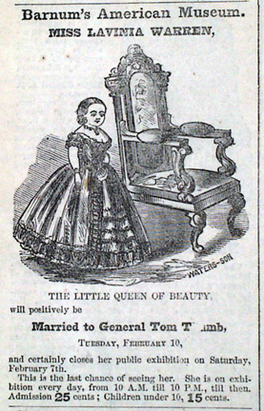 The extravagant wedding of Charles Stratton – known by the stage name General Tom Thumb – and Lavinia Warren was a diversion in the midst of the Civil War. The cause of their short stature is unknown, although they probably had a form of growth hormone deficiency. Both were recruited as performers by P. T. Barnum. The wedding made headlines all over the country. Newspapers reported vast crowds attending the miniature wedding and following the newlyweds’ carriage. Wedding photos and thousands of reception tickets were sold. On their honeymoon, they visited President Lincoln and had a reception at the White House. This was in 1863. In following years, Tom Thumb Weddings or miniature weddings became a popular activity. These pageants were clearly inspired by the Strattons’ wedding, and mimicked the spectacle of the perfect miniature wedding. The actors, children dressed up in adult wedding gear, were typically ten and under and sometimes as young as two. In some places, performances included more than 100 children playing the wedding party and guests. The vows were usually written comically. These plays served as fundraisers, entertainment, and/or a way to teach young children about etiquette. Old articles, as well as a script published by Baker's Plays in 1898, refer to Tom Thumb’s bride by the name Jennie June. The cause for using this name is unclear, but it shows up in quite a few other places. A song called “Little Jennie June” was printed in Album Melodies by Richard Ferber in 1892, and a character Jenny June appeared in a set of paper doll advertisements in 1876. In the 50's, one could buy a Jennie June china doll kit. In the case of the Tom Thumb Wedding skit, it’s possible that June is a reference to the tradition of June weddings. A couple of blushing brides were known as “Lillian Putian,” daughter of “Mr. and Mrs. Midget.” Other accounts described a double wedding with Fred Finger and Nellie or Milly May. However, it seemed more common, especially in later years, to use the performers’ real names. The practice seems to have peaked in the first half of the 20th century and fallen off in the 70’s and 80’s, but Tom Thumb Weddings still pop up now and then. At least one was performed in 2008. The name is the only thing connecting this practice to its origins in English folklore, but it makes for an interesting side to the study of the folktale type. Sources and pictures A news article on the phenomenon: http://www.huffingtonpost.com/melanie-benjamin/royal-wedding_b_850540.html
Images of General Tom Thumb and Lavinia Warren: http://www.brightbytes.com/collection/tomthumb.html An article on the Stratton wedding in 1863: http://www.nytimes.com/1863/02/11/news/loving-lilliputians-warren-thumbiana-marriage-general-tom-thumb-queen-beauty-who.html?pagewanted=all An invitation to a Tom Thumb wedding performance: http://www.aweddingtradition.com/tom_thumb_invitation.htm A brochure for the Tom Thumb Wedding play: http://digital.lib.uiowa.edu/cdm/ref/collection/tc/id/20862 Some pictures: http://search.tacomapubliclibrary.org/images/dt6n.asp?krequest=series+contains+A6009 A performance in 1991: http://www.nytimes.com/1991/06/16/news/tom-thumb-weddings-only-for-the-very-young.html Some more pictures: http://blog.kittanningonline.com/2011/05/tom-thumbs-wedding/ |
About
Researching folktales and fairies, with a focus on common tale types. Archives
July 2024
Categories
All
|
Writing in Margins
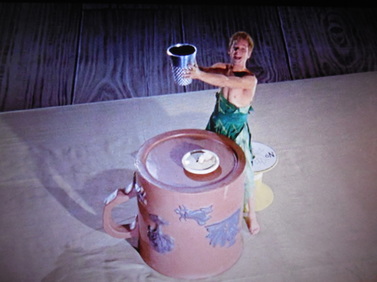
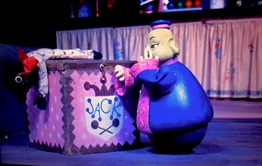
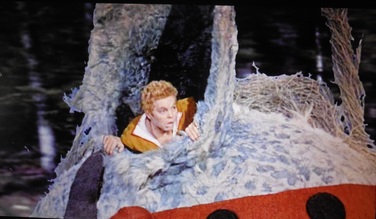
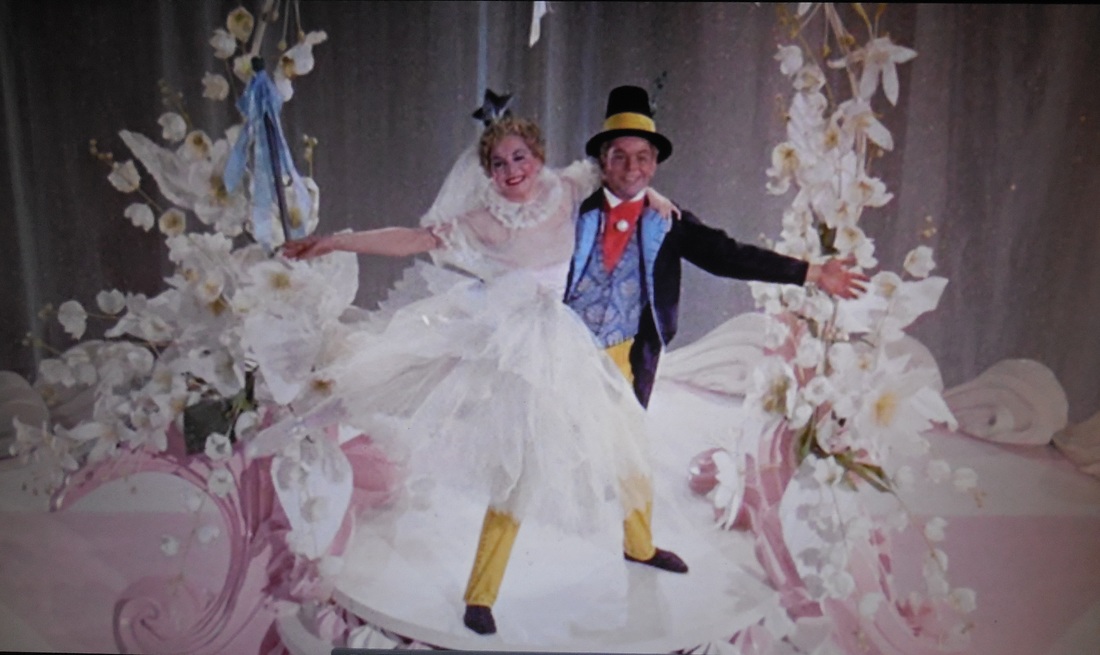
 RSS Feed
RSS Feed
